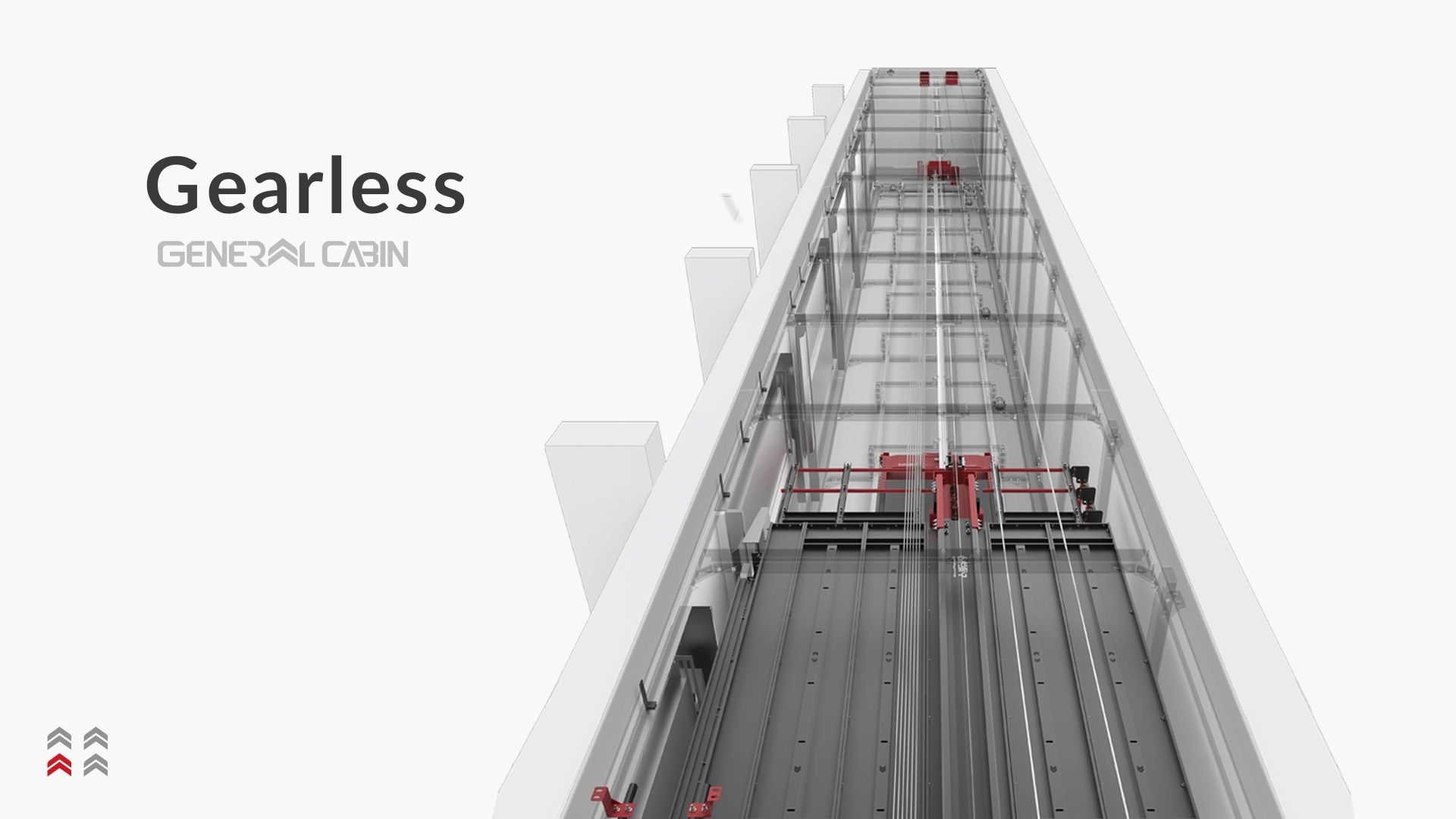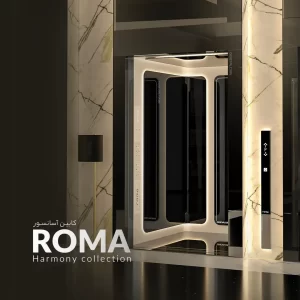
Gearless Elevators
Gearless Elevators are systems where the motor operates without using a gearbox. In these systems, an inverter or speed control drive is utilized to regulate the speed of the traction sheave. This type of elevator motor is of the permanent magnet variety, offering higher efficiency than geared motors. Older gearless elevators used DC motors that allowed precise control of positive and negative acceleration curves. However, modern technology employs AC motors, leveraging permanent magnet construction and electronic advances.
Gearless Elevators (gearless traction elevators) are a type of electric elevator where the motor is directly connected to the pulley without using mechanical gears to transfer power. These elevators are particularly popular in tall buildings and large residential and commercial towers due to their numerous advantages.
Types of Gearless Motors
- Permanent Magnet AC Motor
- Variable Voltage and Frequency AC Motor
- Variable Voltage DC Motor
Differences Between Gearless and Geared Elevator Motors
The most noticeable difference between gearless and geared elevators is the reduced vibration and shaking in gearless elevators due to the absence of a gearbox. Gearless motors do not require lubrication, whereas the lack of timely lubrication can damage geared motors.
Regarding motor speed, gearless elevators operate at around 150 RPM, generating less noise compared to geared motors operating at around 1500 RPM. Additionally, geared motors in busy buildings heat up more quickly, causing temperature sensors to shut the motor off automatically for cooling. Gearless motors typically do not have this overheating issue.
Geared motors require two to three times more force to start compared to gearless motors. Efficiency-wise, gearless motors boast a 98% efficiency rate, significantly higher than the 50% efficiency of geared motors, meaning geared motors consume twice as much energy.
Gearless motors are also smaller and lighter than geared motors, making them easier to install in machine room-less (MRL) elevators.
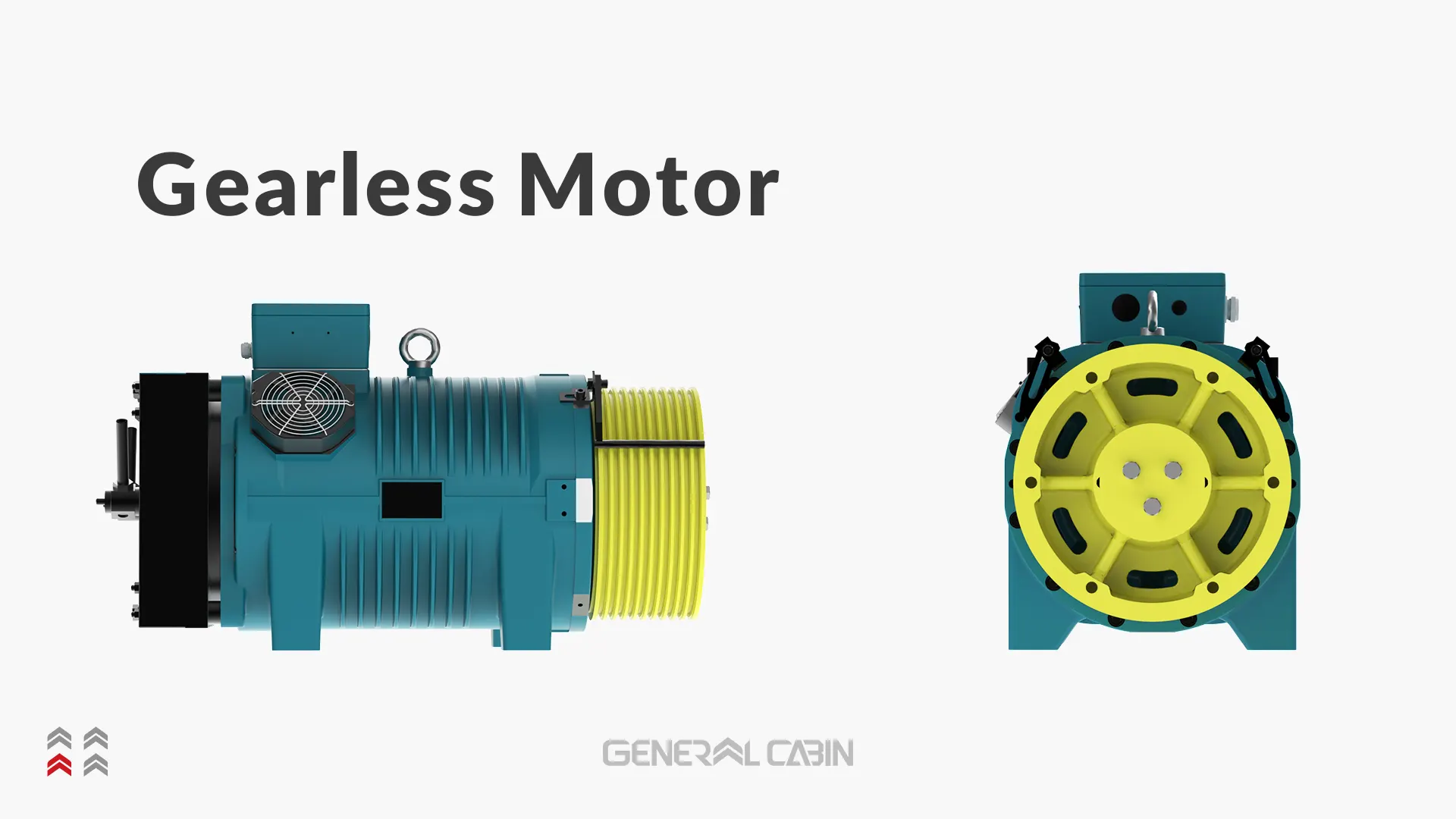
Advantages of Gearless Elevator Motors
- Easy installation
- Requires less space due to smaller size
- 98% efficiency rate
- No need for constant lubrication
- Performs well during peak traffic hours
- No need for a cooling system
- Can be installed without a machine room
- Durable components with a long lifespan
- Quiet operation
- High-quality elevator movement
Disadvantages of Gearless Elevator Motors
- High initial cost (although cost-effective in the long run)
- Requires precision in selecting components
- Poor performance in industrial environments with harmful particles
- Requires a position sensor (encoder)
- Strong brakes are needed for independent stopping in emergencies due to the lack of a gearbox
- Installation and setup must be done by specialists
- Lack of sufficient experience and information among elevator companies and service technicians
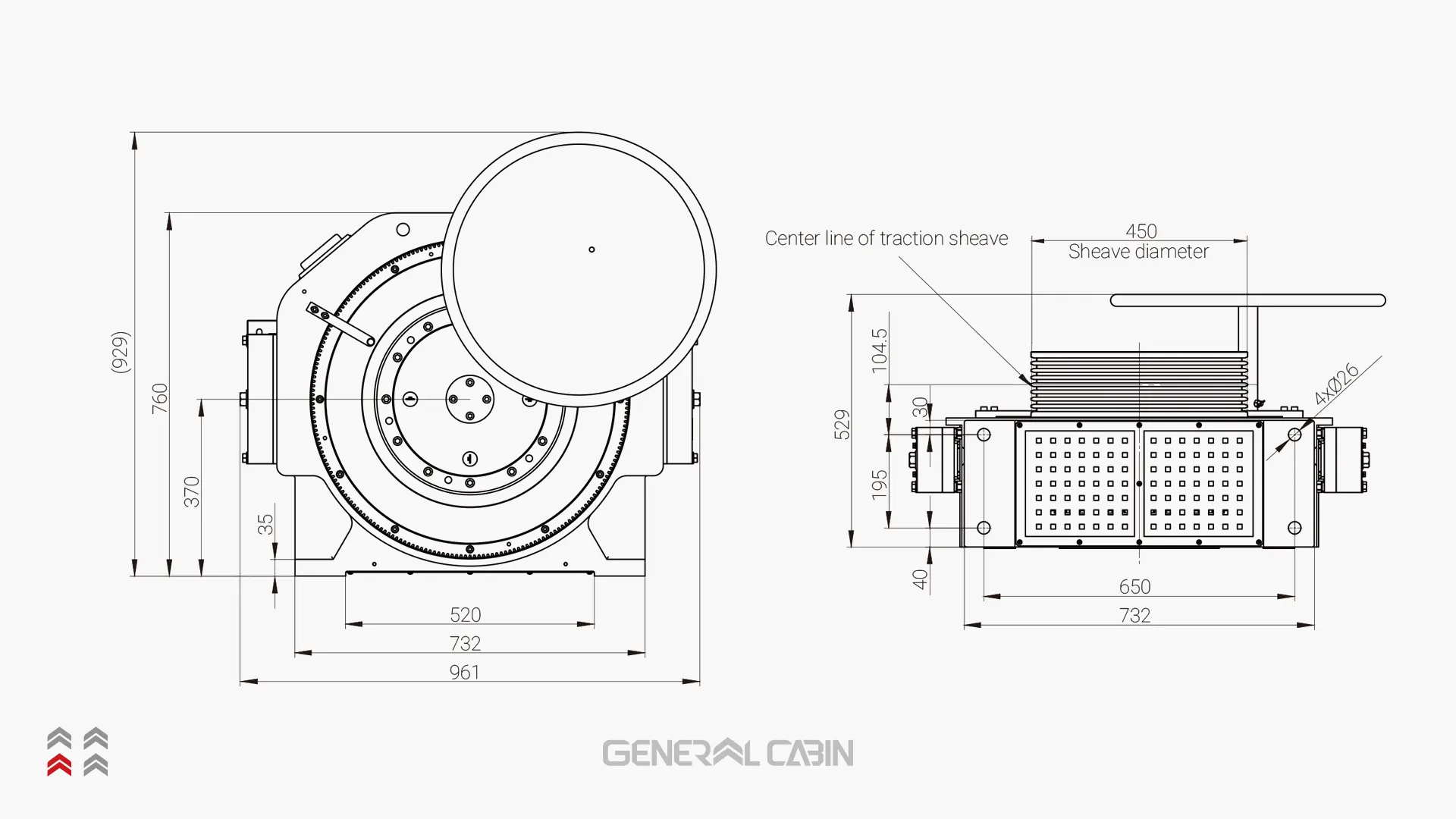
Components of a Gearless Elevator Motor
Each gearless elevator motor consists of the following components:
- Drive motor
- Traction sheave
- Frame
- Direct current rotor or armature
- Protective bearings
- Magnetic brake
Some parts, such as gears, worms, high-speed bearings, flywheels, and couplings, are not present in gearless motors. These motors also do not require oil or lubrication.
Development and Features of Gearless Elevator Motors
In the 1980s, the gearless elevator motor emerged as a result of advancements addressing the shortcomings of earlier elevator motor models. Gearless motors, also known as AC motors, control the output voltage and frequency to ensure smooth elevator movement.
The development of gearless motors has progressed to the extent that, although only a few companies produced compatible equipment a few years ago, now many companies worldwide can design and manufacture equipment compatible with gearless elevator motors. Due to the exceptional advantages of gearless motors, there is an increasing trend among elevator companies to adopt this technology.
While the internal mechanism of gearless motors is better suited for high-speed elevators (usually around 2.5 meters per second), they are also commonly used in lower-speed elevators.
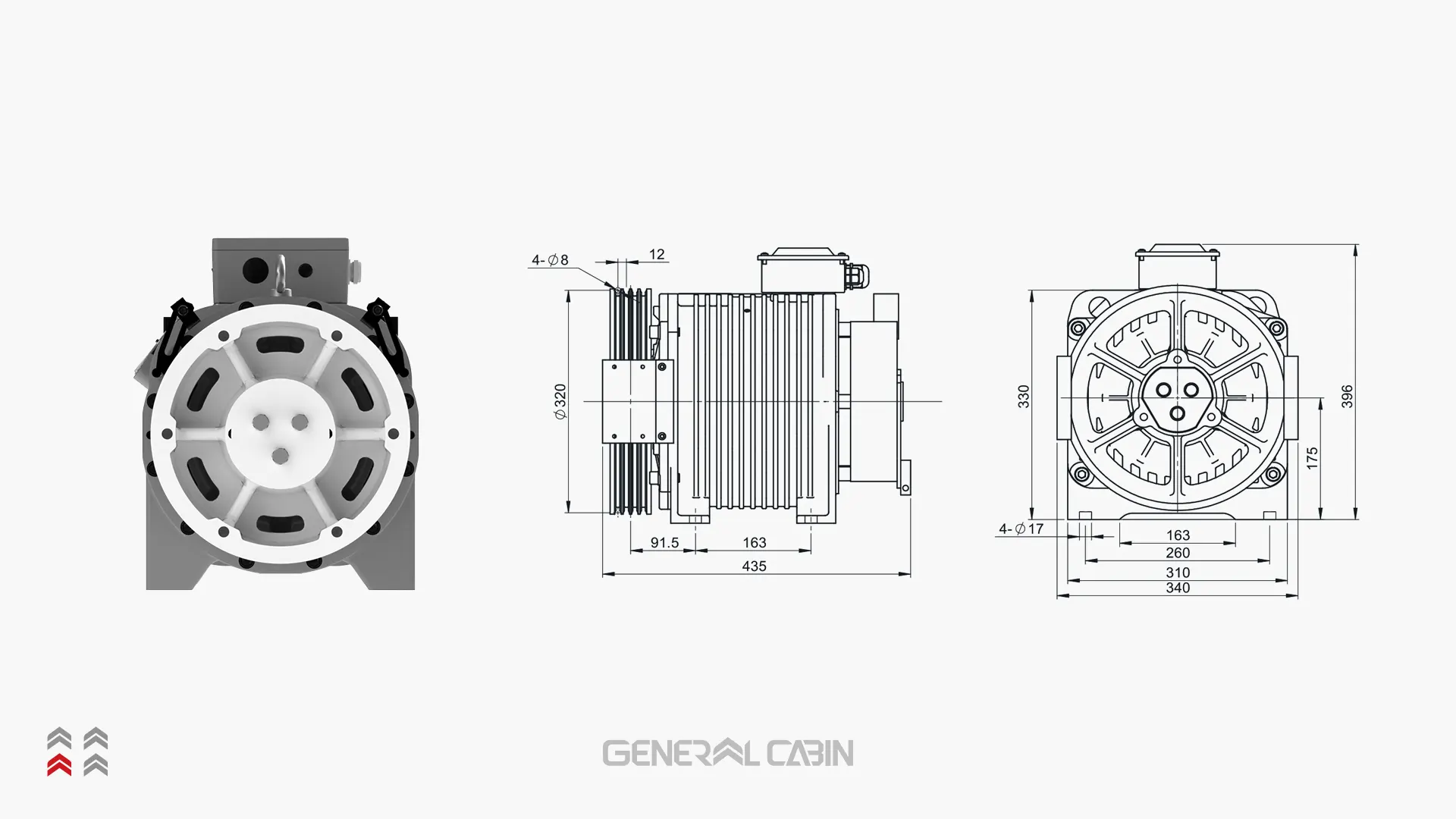
Features of AC Motors
AC motors offer more advanced technology compared to other types, resulting in higher mechanical efficiency than geared traction motors. Additionally, the electrical efficiency of AC motors surpasses that of induction traction motors (DC). Permanent magnet motors are smaller in size and require less space, eliminating the need for a large machine room and allowing for machine room-less (MRL) installation.
Another significant advantage of these motors is that their maintenance costs are relatively low, requiring less frequent and extensive maintenance. Their specific construction also results in fewer breakdowns, thus reducing repair costs.

A History of the Emergence and Functional Objectives of Gearless Motors
Electromechanical motors are produced in two types: DC and AC. DC motors are suitable for applications requiring smooth, quiet, and precise movement. These motors are controlled using a DC generator with variable output. In the 1980s, drives replaced DC generators due to innovations. Here are some advantages of using drives:
- Higher efficiency of drives compared to DC generators
- Better control of drives
- Improved motion quality using drives
- Frequency control
- Voltage control
The emergence of drive technology in the elevator industry led to the development of gearless AC motors, which made the movement and stopping of elevators more precise and comfortable. Older elevators with gearless motors, known as Ward Leonard elevators, used DC motors. However, with the advancement of drive technology, the motion quality of DC gearless motors improved, and higher speeds became achievable. Consequently, the following types of gearless motors were introduced:
- Drum or Barrel Gearless Motor: In this type, the rotor of the elevator motor is located internally.
It is recommended to install drum or barrel gearless motors in machine room-less (MRL) elevators for the following reasons:
- Small dimensions
- Possibility of installation in the elevator shaft
- Disc or Flat Gearless Motor: In this type of gearless motor, the rotor is located externally.
The disc or flat gearless motor also has many advantages, the most important of which are the very small dimensions of the motor, smooth cabin movement, and the very high speed of the elevator.
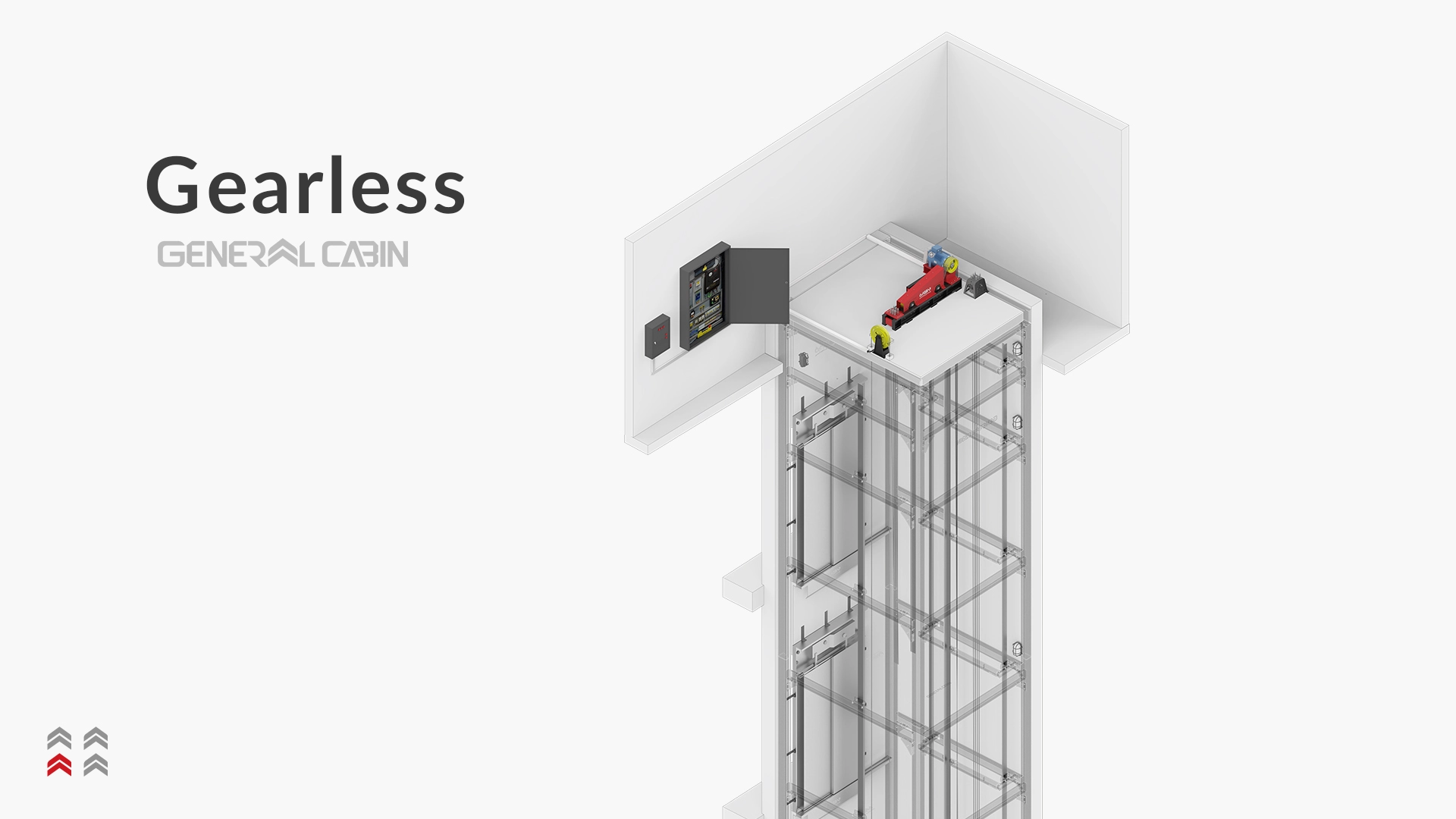
Elevator Design with Gearless Motors
A drive system is typically used to operate a gearless motor. The drive is responsible for converting three-phase AC power to DC. Next, the required voltages and frequencies are injected into the elevator’s gearless motor as AC power by the drive. Since the drive is responsible for converting DC power to AC, it is also called an inverter.
The elevator’s gearless motor generates electricity in the following two scenarios:
- Moving downwards with more than half capacity
- Moving upwards with less than half capacity
This electricity is generated unintentionally and must be used; otherwise, it can cause serious damage to the inverter. Therefore, in elevators with gearless motors, a system called a brake resistor is installed to prevent damage to the inverter. The brake resistor converts the generated electricity into heat. Given the high rate of this current in very tall buildings, it is possible to return this current to the building’s power grid.
Safety System of Gearless Motors
In gearless elevators, the brake is an external collapsible type equipped with two shoes. The brake system in the elevator motor is also designed to open internally. Generally, the brake in the gearless elevator system is designed to operate independently and stop the cabin before the parachute is activated.
When evaluating the quality of the shoes used in the gearless elevator brake system, the following points should be considered:
- Resistance to scratching and abrasion
- Desirable wear characteristics
- Acceptable elasticity
- High thermal and motion resistance
- Strength against moisture and other damaging natural factors
